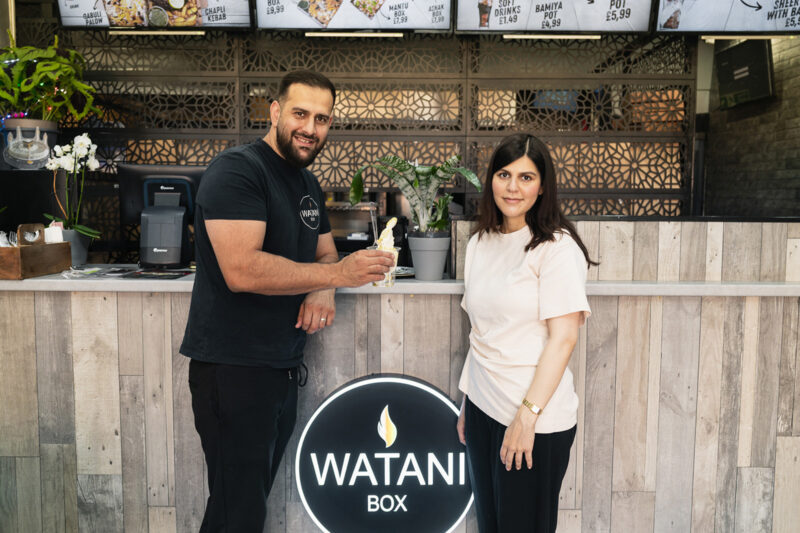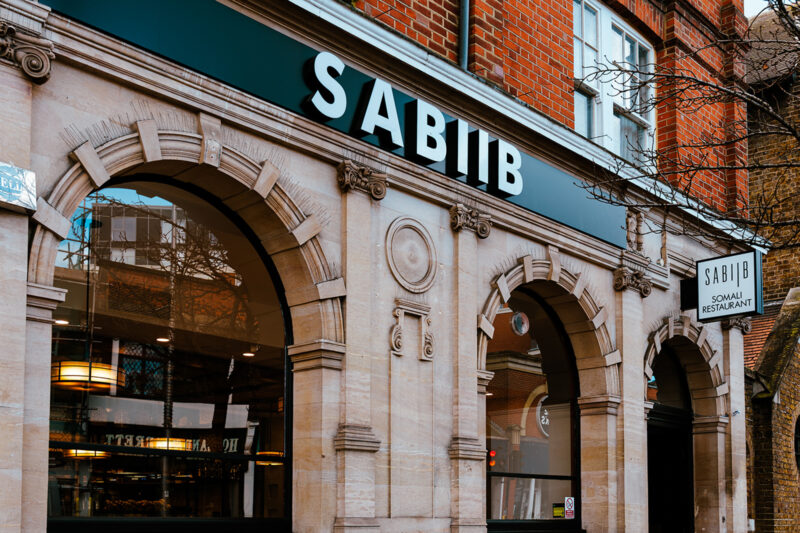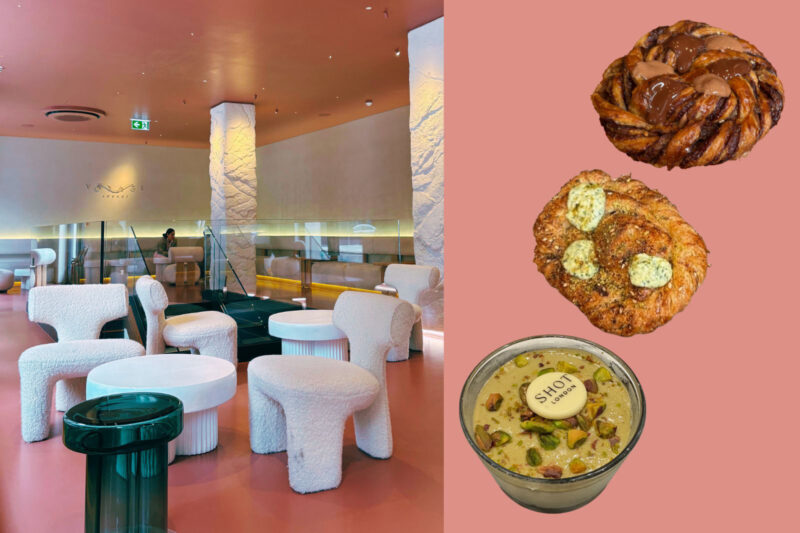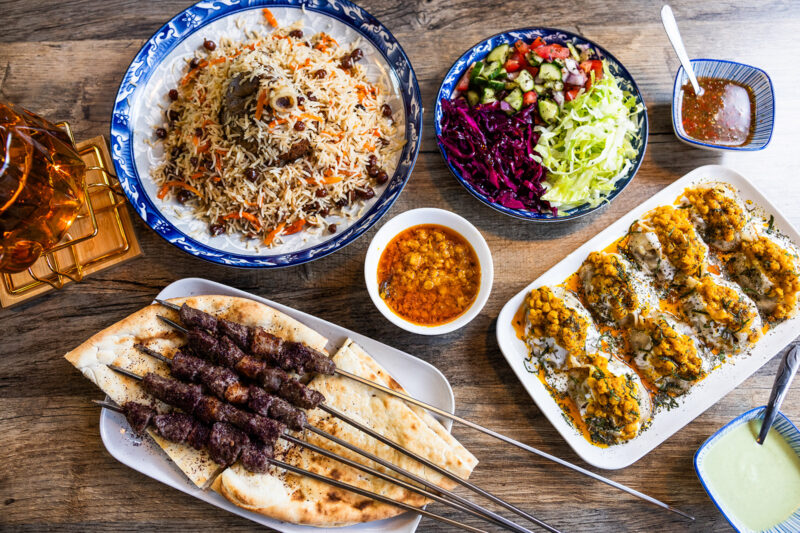
The joy of mishkaki
East Africa’s coastal kebabs tell a delicious story of people, place and family tradition
For anyone with roots on the East African coast, mishkaki is a true taste of home. A street food staple from Kenya to Tanzania and the islands of Zanzibar, the dish consists of cubes of beef, goat or chicken marinated in a fragrant blend of spices, threaded on to wooden skewers and grilled over blistering-hot charcoal. Traditionally served with bread or chips, slathered with chilli and tamarind, and accompanied by a fresh salad, its flavour pulls you in and refuses to let go.
For centuries, vendors everywhere from Mombasa seafront to Forodhani night food market have been serving up mishkaki made according to their own unique recipes. Its origins, however, go back much further and can be traced to Oman, where kebabs are known as mishkak.
East Africa has a long history of trade and cultural exchange with the Arabian peninsula, but Zanzibar and the coasts of what are now known as Kenya and Tanzania fell under the direct rule of the Sultan of Oman from 1698 until colonisation by the British in the late 19th century. During that latter period, the region’s links with South Asia deepened, bringing the spices that give mishkaki its distinctive character. As a perfect fusion of African, Arab and Asian cuisine, it encapsulates the history of the region.
Mishkaki was brought to the UK by immigrants from East Africa, both African and South Asian. The dish has long been a fixture of family gatherings and a few restaurants sprung up to serve it, including Kadiri’s in north-west London. Nowadays, you can find mishkaki at select spots across the city: the Karibuni Zanzibar Hot Style truck in Barking, King of BBQ caterers in Chingford and The Hubb restaurant in Hillingdon. Outside the capital, you can also find mishkaki sellers in cities including Birmingham and Leicester.
Saleh Ahmed, the owner of Mamboz BBQ in Barking, learned the secrets of mishkaki from his parents, who ran a hotel in Tanzania when he was a child. “Now I am an expert. You need to know the piece of meat. I normally use topside,” he says.
‘Mishkaki is cut into small pieces and marinated with a special sauce. We use ginger, garlic and some spices to make it softer. You have to leave it overnight.’
From his food truck on Barking market, Ahmed and his staff have built a thriving business, selling around 20kg of skewered meat a day, along with biryani and grilled sekela chicken. He also does on-site catering for special occasions and says mishkaki is an ideal finger food for weddings and other large gatherings.
In my family, mishkaki is guaranteed to be served when we get together, cooked by us over glowing coals and, more recently, provided by caterers. I fondly recall visiting my dad’s cousin in Mombasa when I was 15 years old. He had been marinating a big plastic bucket of mishkaki for 24 hours, ready for a barbecue. We sat on the roof of his house skewering the meat as he showed me his method for arranging each piece so the fat was evenly distributed, ensuring that every cube remained succulent.
The recipe for the marinade had been passed on to him by his father, known as a mishkaki master among our extended family. When they lived upcountry, away from the coast, he and other men would go out on Saturdays to hunt antelope, then spend the afternoon preparing the meat to cook on the Sunday. My grandfather also made mishkaki, even when he left East Africa and moved to Pakistan. Eventually, he passed on his recipe to my auntie, who moved back to Kenya and set up her own catering business.
The mark of a great mishkaki is the softness — not tenderness in the traditional western sense, but a unique melt-in-the-mouth quality. To achieve that texture, most marinades include a fruit. Green papaya is traditional, but I have also seen versions that use kiwi. In both cases, the acids and enzymes in the fruit break down the meat’s muscle fibres to create the perfect bite.
Back in the 1950s, one of Mombasa’s legendary mishkaki vendors was a man called Mamadi. His hole-in-the-wall shop in the city’s old town attracted long lines of customers, picking up food to take home or eat on the street, there and then. His legacy lives on in a newer restaurant named Mamadi Recorda that still uses his original recipes.
Sadly, in the UK, mishkaki is still not as popular as it should be beyond the East African diaspora. I think it could more than hold its own against high-street chains such as Nando’s, and even such ubiquitous late-night favourites as the döner kebab. For now, though, those of us in the know can find pleasure in its relative scarcity, which makes ready-made mishkaki a somewhat rare and delicious treat.
For me, though, the greatest joy is to be found when the dish is made at home. It comes not just from the fact that recipes are passed down through the years and inextricably tied to histories of people and place. It is also rooted in the patience demanded by slow marination and the time you take to sit down and chat with family members, loading up skewers ready for the grill.
I don’t have my own signature recipe yet, but I have experimented with several that I have found online. I have even introduced my barbecue enthusiast father-in-law to mishkaki. One day, perhaps, I will have a recipe handed down to me and cook it the way my grandfather would have, and maybe I’ll get to pass it along to the next generation.
 Newsletter
Newsletter













